Prices in AUD. Shipping worldwide. Flat rate $8 postage per order within Australia. International by weight calculated at checkout. Read full terms.
-
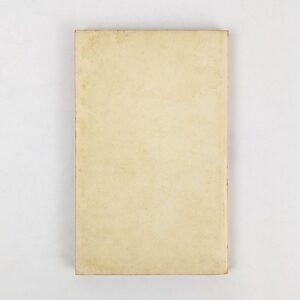

Man Maulers
AU$30.00 Read MoreAdd to cartPeter Willow
Buffalo: Market Arcade, 1968.Femdom pulp fiction. A Wee Hours Special WH 571.
-
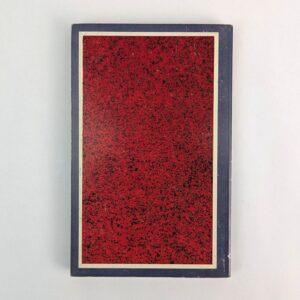
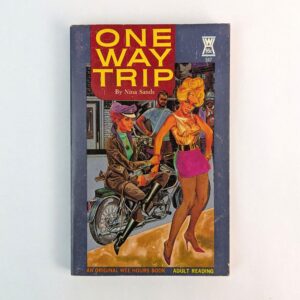
One Way Trip
AU$120.00 Read MoreAdd to cartNina Sands
Buffalo: Wee Hours Books Inc., 1967.Lesbian biker pulp fiction. Wee Hours 547. Cover art by Bill Alexander. Unrecorded in OCLC.
-
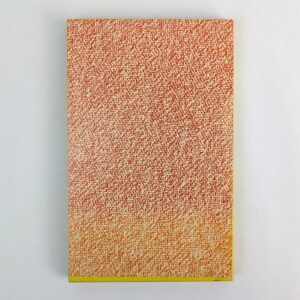

Lady Boss
AU$600.00 Read MoreAdd to cartShawna deNelle
Buffalo: Book Magazine Distributors, 1967.Lesbian pulp fiction. After Hours AH 157. Cover art by Eric Stanton. One in the series of colour covers by Stanton for the First Niter and then After Hours series published by Stanley Malkin in the 1960s when Malkin set Stanton up in a small apartment on the proviso of turning out four covers a month (which Stanton could do in a week). The covers often featured lesbian themes or were female-centric, reversing gender roles and casting women as the physical aggressors and men as compliant and fragile. Many of the covers are considered some of Stanton’s best colour work. Unrecorded in OCLC.
-
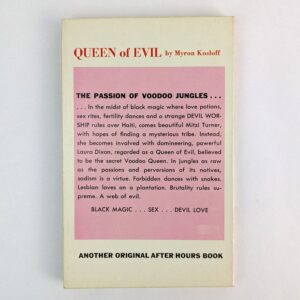
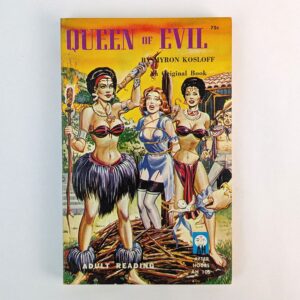
Queen of Evil
AU$500.00 Read MoreAdd to cartMyron Kosloff
Buffalo: After Hours Book Inc., 1964.Voodoo occult lesbian pulp fiction by Paul Hugo Little under his Myron Kosloff pseudonym. After Hours AH 105. Cover art by Eric Stanton. One in the series of colour covers by Stanton for the First Niter and then After Hours series published by Stanley Malkin in the 1960s when Malkin set Stanton up in a small apartment on the proviso of turning out four covers a month (which Stanton could do in a week). The covers often featured lesbian themes or were female-centric, reversing gender roles and casting women as the physical aggressors and men as compliant and fragile. Many of the covers are considered some of Stanton’s best colour work. 1 copy recorded in OCLC.
-
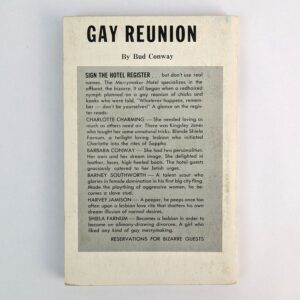
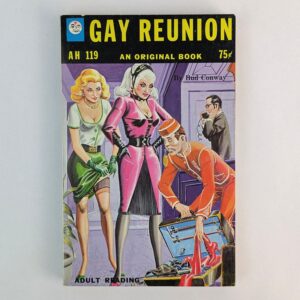
Gay Reunion
AU$400.00 Read MoreAdd to cartBud Conway
Buffalo: After Hours Book Inc., 1965.Lesbian pulp fiction. After Hours AH 119. Cover art by Eric Stanton. One in the series of colour covers by Stanton for the First Niter and then After Hours series published by Stanley Malkin in the 1960s when Malkin set Stanton up in a small apartment on the proviso of turning out four covers a month (which Stanton could do in a week). The covers often featured lesbian themes or were female-centric, reversing gender roles and casting women as the physical aggressors and men as compliant and fragile. Many of the covers are considered some of Stanton’s best colour work. 1 copy recorded in OCLC.
-
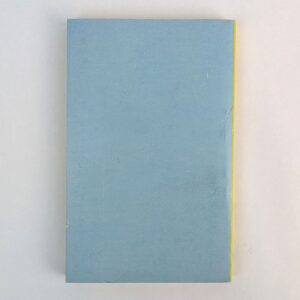
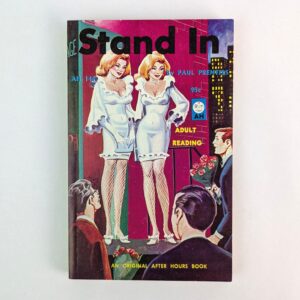
Stand In
AU$300.00 Read MoreAdd to cartPaul Prentiss
Buffalo: After Hours Book Inc., 1966.Lesbian pulp fiction. After Hours AH 144. Cover art by Eric Stanton with a further illustrated advertisement leaf for Adventure Serials by Stanton at rear. One in the series of colour covers by Stanton for the First Niter and then After Hours series published by Stanley Malkin in the 1960s when Malkin set Stanton up in a small apartment on the proviso of turning out four covers a month (which Stanton could do in a week). The covers often featured lesbian themes or were female-centric, reversing gender roles and casting women as the physical aggressors and men as compliant and fragile. Many of the covers are considered some of Stanton’s best colour work. Unrecorded in OCLC.
-
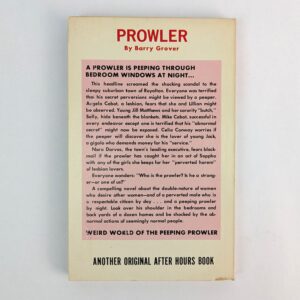
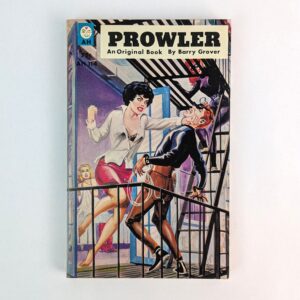
Prowler
AU$300.00 Read MoreAdd to cartBarry Grover
Buffalo: After Hours Book Inc., 1965.Lesbian pulp fiction. After Hours AH 114. Cover art by Eric Stanton. One in the series of colour covers by Stanton for the First Niter and then After Hours series published by Stanley Malkin in the 1960s when Malkin set Stanton up in a small apartment on the proviso of turning out four covers a month (which Stanton could do in a week). The covers often featured lesbian themes or were female-centric, reversing gender roles and casting women as the physical aggressors and men as compliant and fragile. Many of the covers are considered some of Stanton’s best colour work. Unrecorded in OCLC.
-
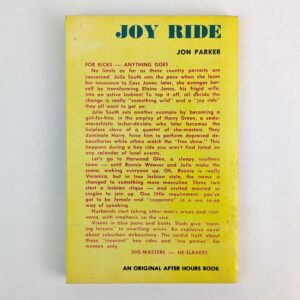

Joy Ride
AU$200.00 Read MoreAdd to cartJon Parker
Buffalo: After Hours Book Inc., 1966.Lesbian pulp fiction. After Hours AH 129. Cover art by Eric Stanton. One in the series of colour covers by Stanton for the First Niter and then After Hours series published by Stanley Malkin in the 1960s when Malkin set Stanton up in a small apartment on the proviso of turning out four covers a month (which Stanton could do in a week). The covers often featured lesbian themes or were female-centric, reversing gender roles and casting women as the physical aggressors and men as compliant and fragile. Many of the covers are considered some of Stanton’s best colour work.
-
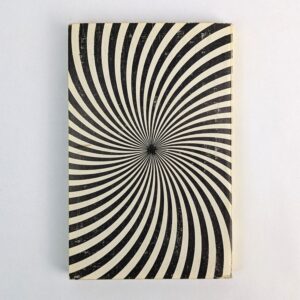
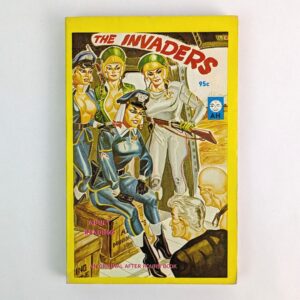
The Invaders
AU$200.00 Read MoreAdd to cartAnthony Dean
Buffalo: After Hours Book Inc., 1966.After Hours AH 138. Cover art by Gene Bilbrew AKA Eneg. An occasional Bilbrew contribution to the After Hours series published by Stanley Malkin in the 1960s. The covers often featured lesbian themes or were female-centric, reversing gender roles and casting women as the physical aggressors and men as compliant and fragile.
-
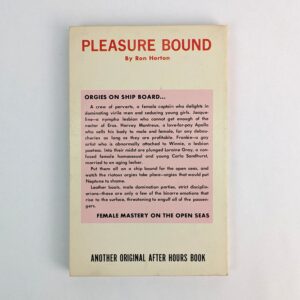
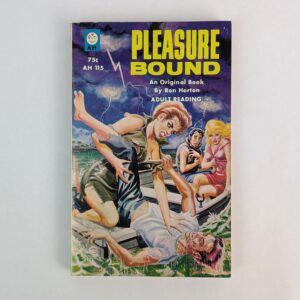
Pleasure Bound
AU$200.00 Read MoreAdd to cartRon Horton
Buffalo: After Hours Book Inc., 1965.Lesbian orgies on the high seas. After Hours AH 115. Cover art by Eric Stanton. One in the series of colour covers by Stanton for the First Niter and then After Hours series published by Stanley Malkin in the 1960s when Malkin set Stanton up in a small apartment on the proviso of turning out four covers a month (which Stanton could do in a week). The covers often featured lesbian themes or were female-centric, reversing gender roles and casting women as the physical aggressors and men as compliant and fragile. Many of the covers are considered some of Stanton’s best colour work.
-
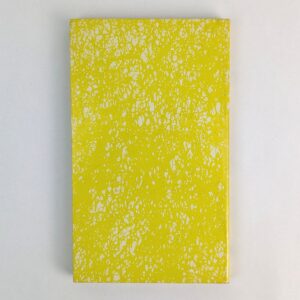
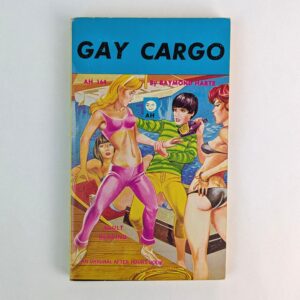
Gay Cargo
AU$200.00 Read MoreAdd to cartRaymond Harte
Buffalo: Market Arcade, 1967.After Hours pulp AH 164. Cover art by Bill Alexander. Continuing the series of colour covers by Stanton for the After Hours series published by Stanley Malkin in the 1960. The covers often featured lesbian themes or were female-centric, reversing gender roles and casting women as the physical aggressors and men as compliant and fragile.
-
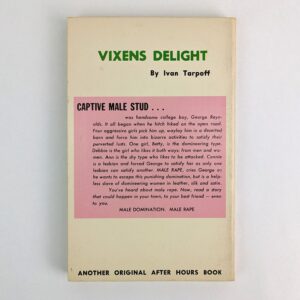
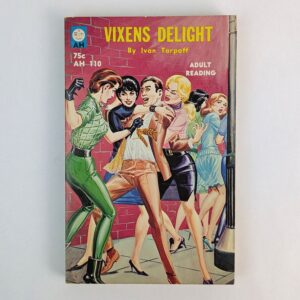
Vixens Delight
AU$300.00 Read MoreAdd to cartIvan Tarpoff
Buffalo: After Hours Book Inc., 1965.Femdom pulp. After Hours AH 110. Cover art by Eric Stanton. One in the series of colour covers by Stanton for the First Niter and then After Hours series published by Stanley Malkin in the 1960s when Malkin set Stanton up in a small apartment on the proviso of turning out four covers a month (which Stanton could do in a week). The covers often featured lesbian themes or were female-centric, reversing gender roles and casting women as the physical aggressors and men as compliant and fragile. Many of the covers are considered some of Stanton’s best colour work.
-
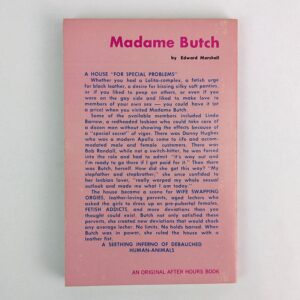
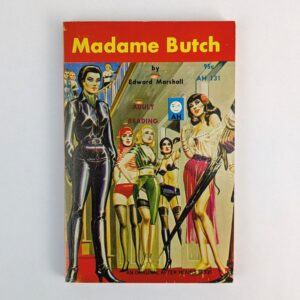
Madame Butch
AU$400.00 Read MoreAdd to cartEdward Marshall
Buffalo: After Hours Book Inc., 1966.Lesbian domination pulp. “Whether you had a Lolita-complex, a fetish urge for black leather, a desire for kissing silky soft panties, or if you liked to peep on others, or even if you were on the gay side and liked to make love to members of your own sex — you could have it (at a price) when you visited Madame Butch.” After Hours AH 131. Cover art by Eric Stanton. One in the series of colour covers by Stanton for the First Niter and then After Hours series published by Stanley Malkin in the 1960s when Malkin set Stanton up in a small apartment on the proviso of turning out four covers a month (which Stanton could do in a week). The covers often featured lesbian themes or were female-centric, reversing gender roles and casting women as the physical aggressors and men as compliant and fragile. Many of the covers are considered some of Stanton’s best colour work.
-
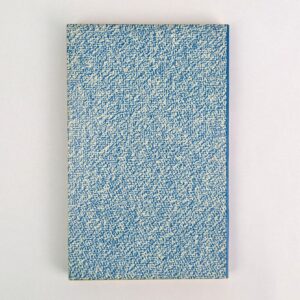
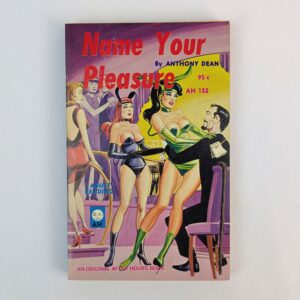
Name Your Pleasure
AU$150.00 Read MoreAdd to cartAnthony Dean
Buffalo: After Hours Book Inc., 1966.A group of college girls move out to San Francisco and get jobs as topless waitresses. After Hours AH 152. Cover art by Eric Stanton. One in the series of colour covers by Stanton for the First Niter and then After Hours series published by Stanley Malkin in the 1960s when Malkin set Stanton up in a small apartment on the proviso of turning out four covers a month (which Stanton could do in a week). The covers often featured lesbian themes or were female-centric, reversing gender roles and casting women as the physical aggressors and men as compliant and fragile. Many of the covers are considered some of Stanton’s best colour work. This cover featuring a self-portrait of a grabby Stanton. Unrecorded in OCLC.
-

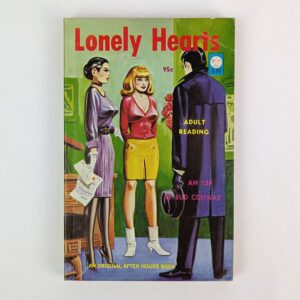
Lonely Hearts
AU$250.00 Read MoreAdd to cartBud Conway
Buffalo: After Hours Book Inc., 1966.Lesbian pulp fiction by American pulp writer Paul Little under his Bob Conway pseudonym. After Hours AH 134. Cover art by Eric Stanton with a further illustrated advertisement leaf for Adventure Serials by Stanton at rear. One in the series of colour covers by Stanton for the First Niter and then After Hours series published by Stanley Malkin in the 1960s when Malkin set Stanton up in a small apartment on the proviso of turning out four covers a month (which Stanton could do in a week). The covers often featured lesbian themes or were female-centric, reversing gender roles and casting women as the physical aggressors and men as compliant and fragile. Many of the covers are considered some of Stanton’s best colour work.
-
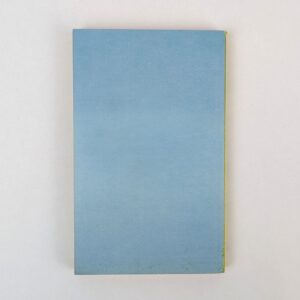
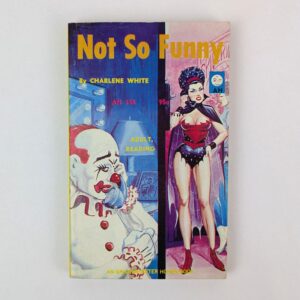
Not So Funny
AU$600.00 Read MoreAdd to cartCharlene White
Buffalo: After Hours Book Inc., 1966.After Hours pulp AH 145. Cover art by Eric Stanton with a further illustrated advertisement leaf for Adventure Serials by Stanton at rear. One in the series of colour covers by Stanton for the First Niter and then After Hours series published by Stanley Malkin in the 1960s when Malkin set Stanton up in a small apartment on the proviso of turning out four covers a month (which Stanton could do in a week). The covers often featured lesbian themes or were female-centric, reversing gender roles and casting women as the physical aggressors and men as compliant and fragile. Many of the covers are considered some of Stanton’s best colour work. This cover featuring a subtle goof by Stanton on Steve Ditko’s Spiderwoman. The pseudonym of Charlene White sometimes credited to prolific low-budget filmmaker and pulp novelist Ed Wood, however this is disputed. Unrecorded in OCLC.
-
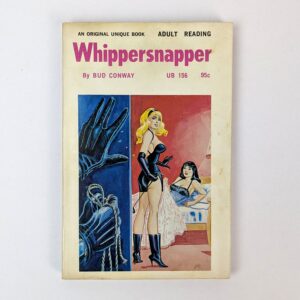
Whippersnapper
AU$200.00 Read MoreAdd to cartBud Conway [Paul Hugo Little]
[Buffalo]: Unique Books, 1968.Lesbian pulp fiction by American pulp writer Paul Little under his Bob Conway pseudonym. UB 156. Lesbians and sadists at a Satanic Hollywood costume party. Colour cover illustration combo by Eric Stanton and Steve Ditko (co-creator of Spider-Man), who a couple of years earlier had developed an artistic partnership following Ditko’s split from Marvel. Unrecorded in OCLC.
-
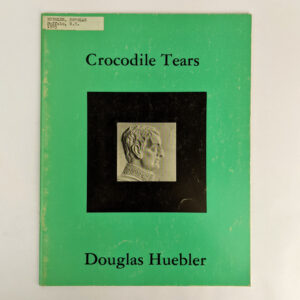
Crocodile Tears
AU$110.00 Read MoreAdd to cartDouglas Huebler
Buffalo: Albright-Knox Art Gallery and CEPA Gallery, 1985.Brief fictions re-sounding from the proposal in Variable Piece #70: 1971 to photographically document the existence of everyone alive. Photographs of American conceptual artist Douglas Heubler’s Variable Piece #70, and found forgeries of works by Van Gogh, Matisse, and Degas, illustrating a disjointed screenplay. A reflection on the dark side of the art market.
